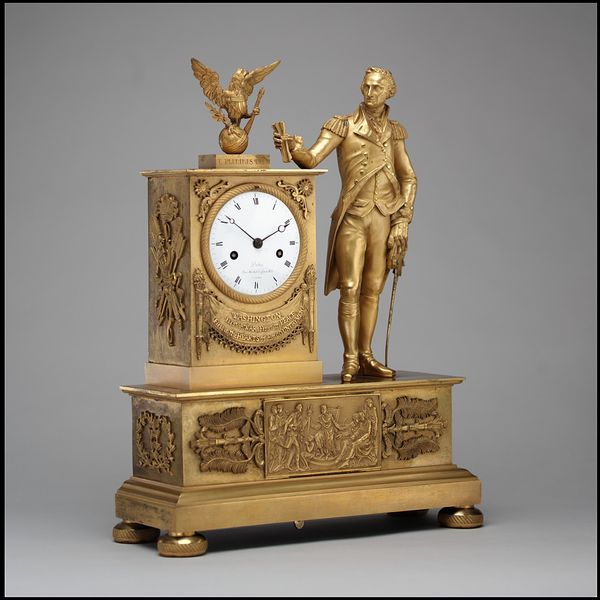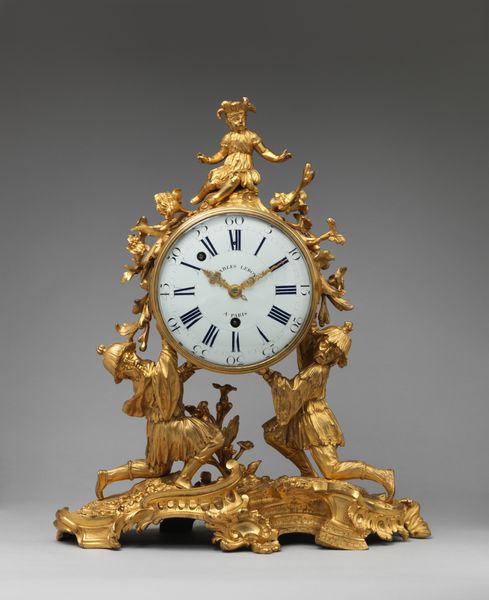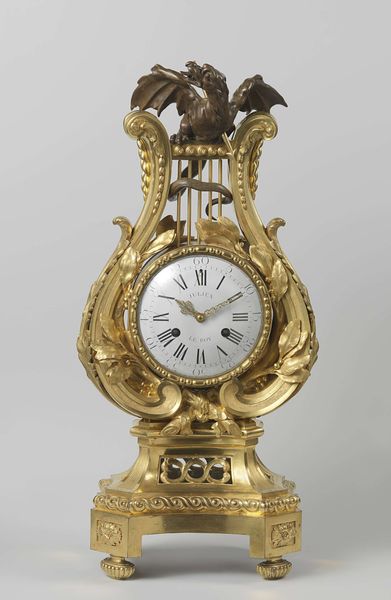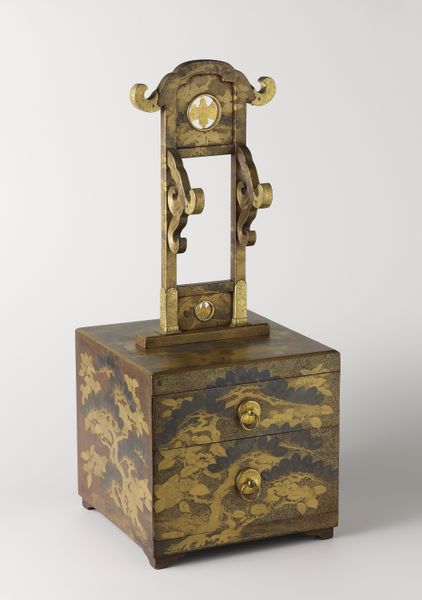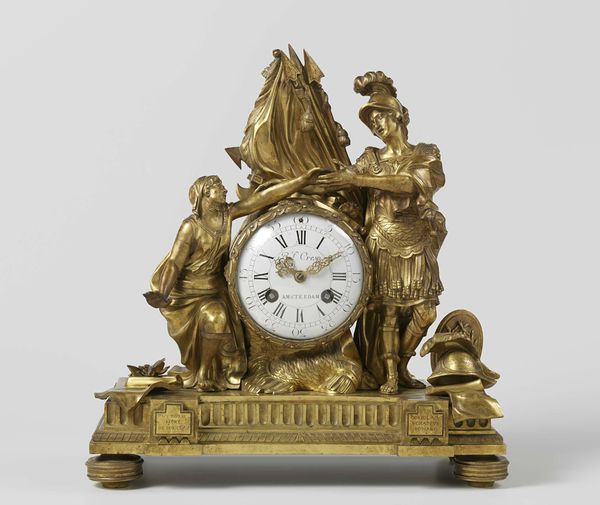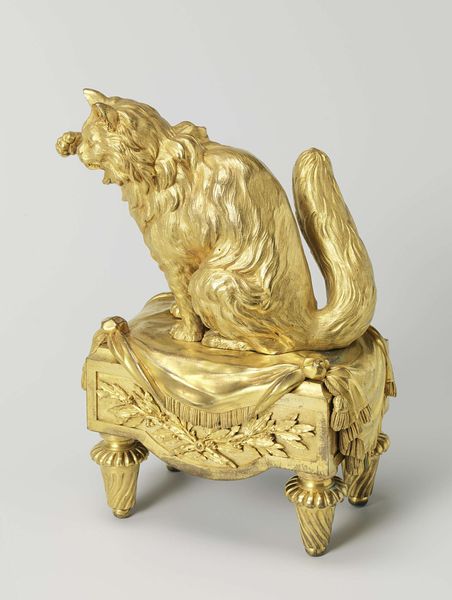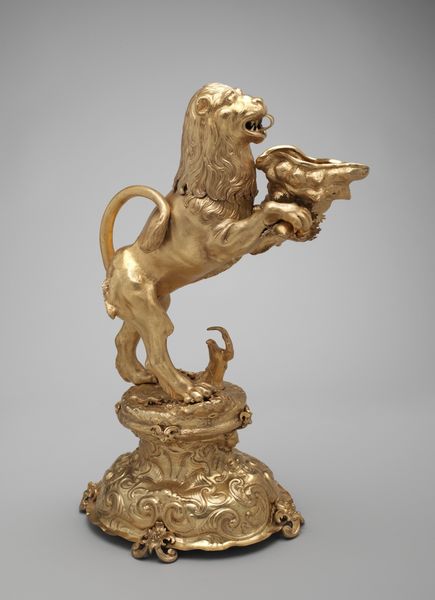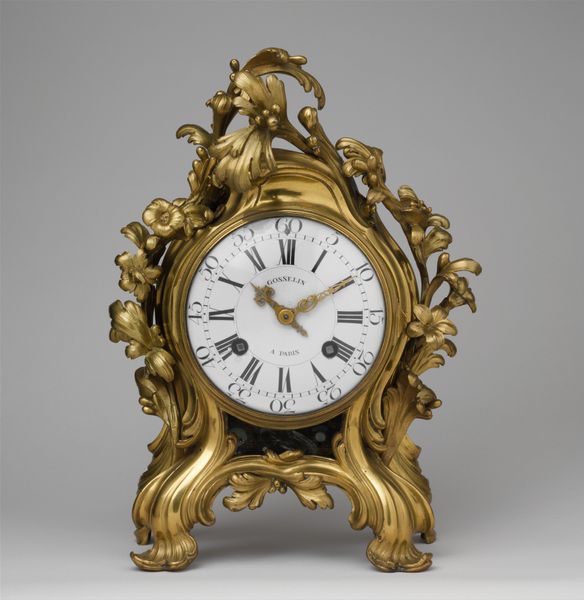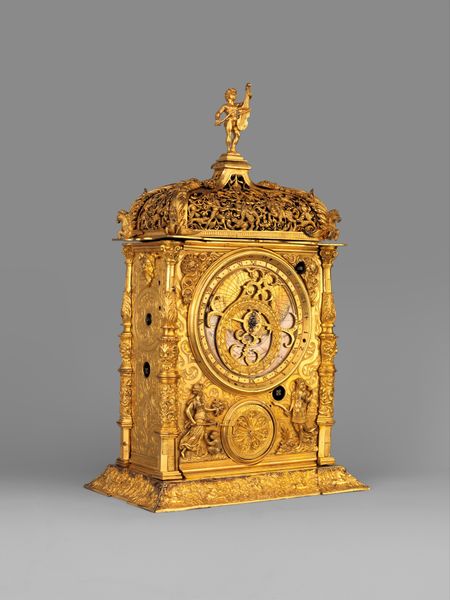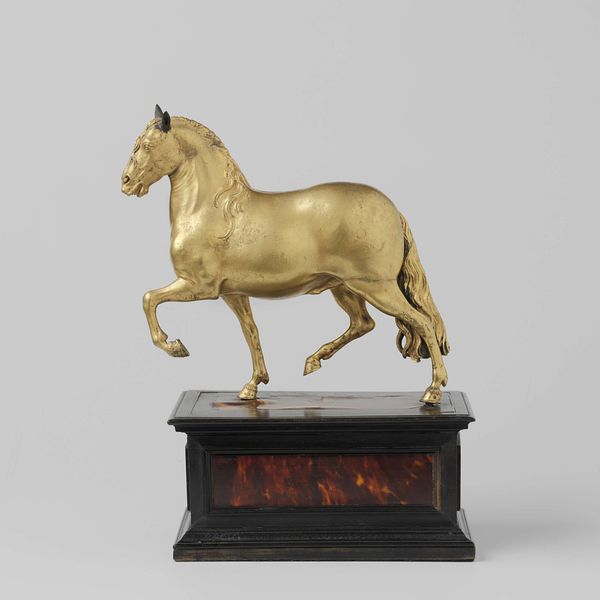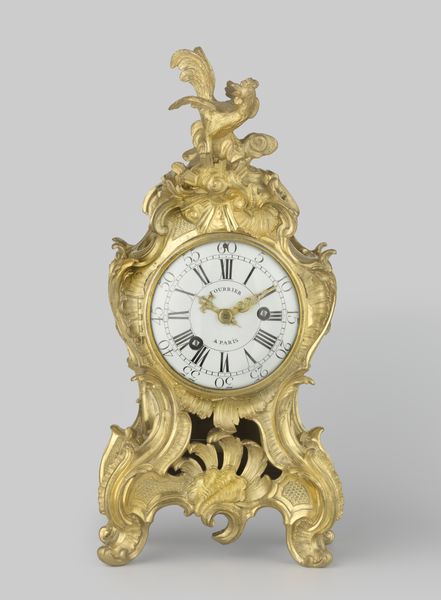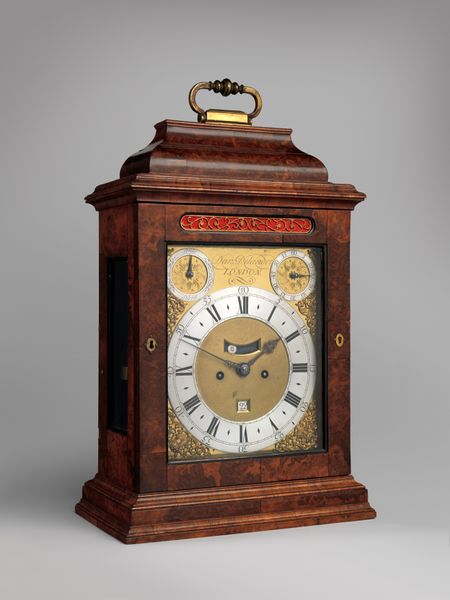
metal, bronze, sculpture
#
baroque
#
metal
#
sculpture
#
bronze
#
sculpture
#
decorative-art
Dimensions: Overall: 13 1/2 × 8 × 5 1/2 in. (34.3 × 20.3 × 14 cm)
Copyright: Public Domain
Curator: Here we have a remarkable piece of craftsmanship: an automaton clock in the form of a lion, dating from between 1615 and 1640. Editor: It's a striking image. The gilded lion seems frozen mid-roar, a dramatic flourish rendered in metal. The contrast with the dark base and delicate clock face creates an odd, but appealing, tension. Curator: Indeed. Its Baroque style reflects an era of grandeur, but I think the clock invites broader reflections on colonialism. Consider the lion, an emblem of European power, subjugating time itself. Whose time is being measured and for what purpose? Was this object perhaps commissioned by someone invested in overseas expansion and eager to manage not only resources but also the very pace of life within colonised territories? Editor: That's a compelling perspective, although I initially focused on its intricate structure. Notice the perfect balance in composition: the solid, imposing lion perfectly aligned to a clock with the gilded decoration that mimics that of the lion, all of this is constructed from bronze and metal and it’s all connected within its visual language. Its gilded surfaces gleam, promising wealth and sophistication while at the same time they mask a sophisticated mechanism. It exemplifies Baroque sensibilities. Curator: The materiality of the clock, particularly the gold, also raises questions about the sources and systems used to procure this rare metal. The violence needed to take it and the damage done on those people should be at the forefront when considering this. Editor: Certainly, those socio-political readings enrich our understanding. Yet, when standing before it, one cannot deny the sheer aesthetic impact and how it interacts to light, to movement, and time itself! Curator: By looking into both the art and colonial past that went into constructing such artworks we create a deeper knowledge about that time. Editor: Indeed, appreciating both its intrinsic artistry and its entanglement with the colonial powers offers a truly holistic encounter with such objects.
Comments
No comments
Be the first to comment and join the conversation on the ultimate creative platform.
